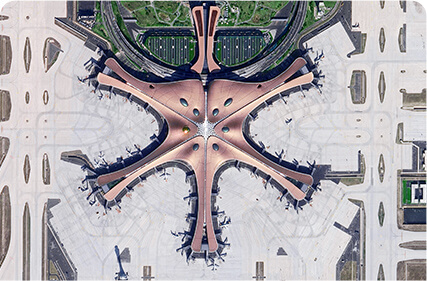English
Precision refers to the accuracy of the measured value compared to the true value under certain conditions, and high precision means that both system error and random error are relatively small.
System error represents the size of the deviation of the average value of multiple repeated measurements from the true value, while random error represents the distribution and consistency of multiple repeated measurements.
The precision of satellite remote sensing system is usually divided into geometric precision and radiometric precision.
Geometric precision is to judge the deviation between the target position and the actual position, and is generally divided into positioning accuracy without control points and positioning accuracy with control points.
Radiometric precision is the deviation between the spectral reflection and radiation value of the target/object obtained through model inversion and the true value. The accuracy of remote sensing application information products is not only related to the accuracy of the inversion model, but also to the quality of input data products and the accuracy of satellite geometric/radiometric calibration.
Timeliness refers to the time required from the user's task request to obtaining information products that meet the user's requirements within a certain time range, including the duration and update cycle. It is an important indicator to evaluate the dynamic monitoring capability of satellite remote sensing system and its application value in multi-temporal analysis.
The timeliness of satellite remote sensing system is related to task instructions, satellite data acquisition, ground data reception, processing and distribution, information extraction and inversion, etc.
For geostationary orbit satellites, because they can continuously observe specific areas, the time resolution of a single satellite is very high, up to less than a minute.
For low earth orbit satellites, due to the influence of orbit motion, a single satellite has a relatively long repeat observation time for a specific area, generally on the order of several days.
To characterize the high and low time resolution of remote sensing satellites, satellite revisit and coverage time are usually used to measure. Revisit time refers to the minimum time interval between two consecutive data acquisitions by a satellite for the same target. Coverage time refers to the minimum time interval for obtaining effective data by comprehensively covering a specific area. By increasing the swath width of the sensor and the maneuverability and agility of the satellite platform, and conducting scientific task scheduling and planning, the speed of a single satellite revisiting and covering can be effectively increased. A constellation formed by multiple satellites can further improve the time resolution of satellite remote sensing system.
Completeness refers to the degree of coverage and scale subdivision of space, spectrum, radiation, etc. required for a specific task. Different task objectives have different requirements for completeness, usually considering the basic requirements such as range and resolution.
In terms of spatial scale, there needs to be sufficient effective coverage area and high spatial resolution. Spatial resolution, also known as ground resolution, refers to the minimum angular or linear spacing between two adjacent targets that can be distinguished on satellite remote sensing images.
For scanning imaging systems, the minimum ground sampling distance is usually used to characterize, which refers to the minimum ground size of a single pixel or corresponding to a detector unit, also known as pixel resolution (GSD).
The higher the spatial resolution, the better the spatial details can be distinguished. It is usually divided into low resolution (not less than 30 meters), medium resolution (5 ~ 30 meters), high resolution (1 ~ 5 meters), and very high resolution (better than 1 meter). In terms of spectral characteristics, it is necessary to cover sufficient spectral bandwidth and have high spectral resolution.
